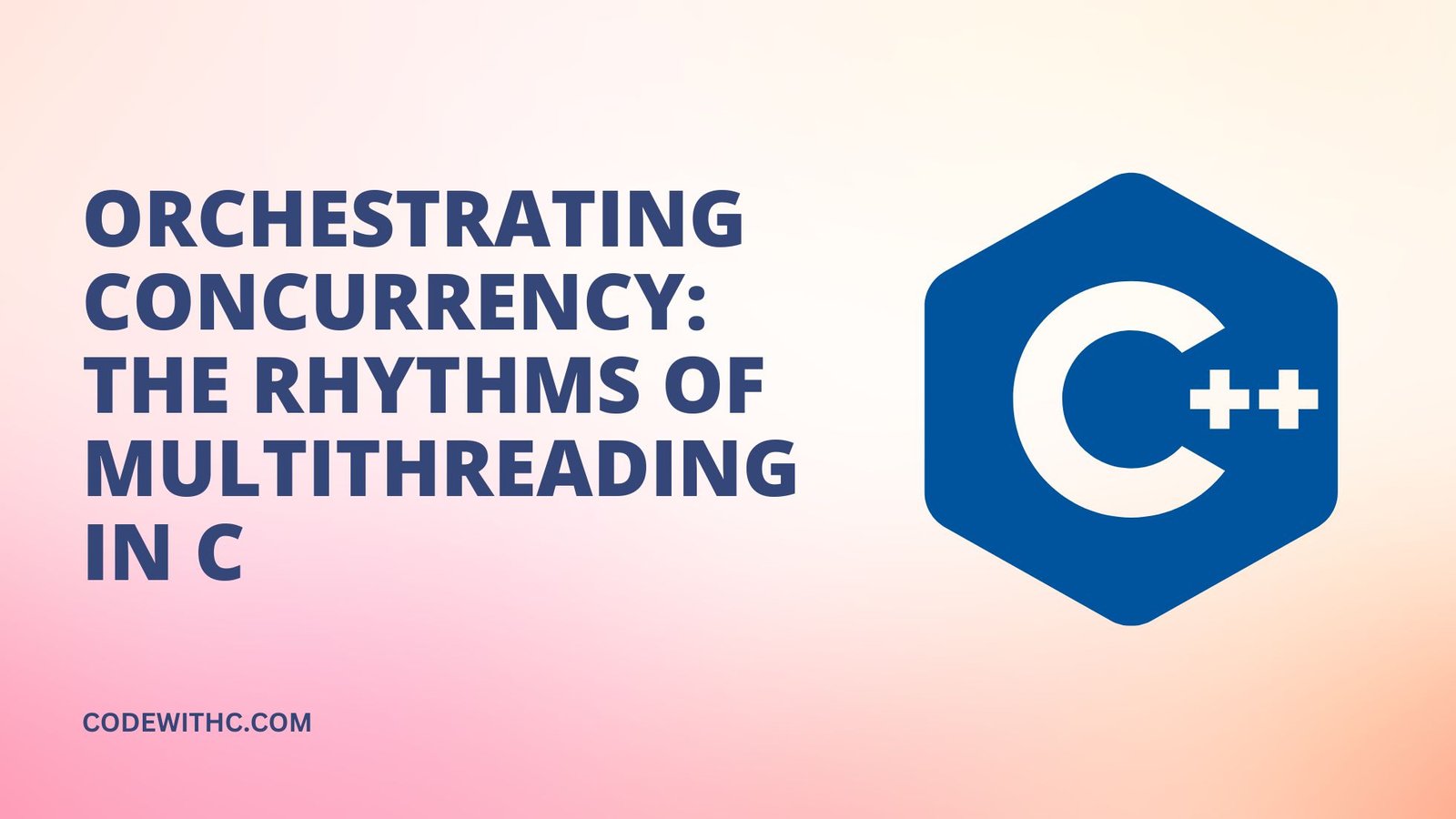Hey there, maestros of the coding symphony! ? Ever thought about how a computer juggles multiple tasks seamlessly? It’s all thanks to the art of Multithreading in C. Just like coordinating different instruments in an orchestra, multithreading is about managing multiple threads in harmony.
The Basics: What is Multithreading?
Multithreading is a type of parallel execution where multiple threads of a single process run concurrently, sharing the same memory space. Think of it like a band where every musician plays a different instrument, yet they’re all reading from the same sheet music. Each thread performs its task, but the end result is a harmonious composition.
The Players: Threads vs. Processes
In the world of computing, we often hear about processes and threads as if they’re interchangeable. But they’re not! A process is an independent program running in its own memory space, like a solo artist. Threads, however, are the smaller units of a process. They’re the individual musicians in an orchestra, each playing a part but sharing the same stage and resources.
The Conductor: Synchronization
In an orchestra, the conductor ensures that the violin doesn’t drown out the flute and that the drums don’t go rogue. In multithreading, synchronization serves as the conductor. This involves using tools like mutexes, semaphores, and condition variables to ensure that threads play nicely together. Without proper synchronization, you risk hitting sour notes like race conditions and deadlocks.
The Score: Shared Memory and Resources
In an orchestra, the musicians share the same sheet music. In a multithreaded program, threads share the same memory space. This shared memory is both a blessing and a curse. It allows for easy communication between threads, but it’s also a hotbed for potential issues like resource contention and data corruption.
The Art of Timing: Multithreading in C Lifecycle
Just like a musical piece has different movements—allegro, adagio, etc.—threads have different states in their lifecycle. Understanding when a thread is created, running, blocked, or terminated is crucial to managing resources and optimizing performance.
The Maestro’s Challenge: Complexity and Pitfalls
Multithreading is not for the faint of heart. It’s like conducting a complex symphony with various instruments, each with its own quirks and complexities. Missteps can lead to a cacophony of bugs that are notoriously difficult to debug.
The Instruments: What are Threads?
In the grand concert of a program’s execution, threads are individual instruments playing their parts. Each thread is a sequence of instructions that can be executed concurrently with others.
The Soloist: Creating a Thread
In C, threads are primarily managed using the POSIX threads, or pthreads, library.
#include <pthread.h>
void *myThreadFunc(void *vargp) {
// Thread actions here
return NULL;
}
pthread_t thread_id;
pthread_create(&thread_id, NULL, myThreadFunc, NULL);
Code Explanation:
pthread_createis used to spawn a new thread. Here,myThreadFuncis the function that the new thread will execute.
The Symphony: Synchronizing Threads
When multiple instruments play, they need to be in sync. Similarly, threads often require coordination to avoid chaos.
The Crescendo: Using Mutexes
Mutexes (short for mutual exclusions) are like the conductor’s cues, ensuring only one instrument plays a particular part at a time.
pthread_mutex_t mutex = PTHREAD_MUTEX_INITIALIZER;
pthread_mutex_lock(&mutex);
// Critical section here
pthread_mutex_unlock(&mutex);
Code Explanation:
- The mutex ensures that the critical section is accessed by only one thread at a time, preventing potential data races.
The Interludes: Joining and Exiting Threads
After an instrument finishes its part, it waits for the others or takes a break. Threads too can be joined or exited.
The Finale: Joining a Thread
pthread_join(thread_id, NULL);
Code Explanation:
pthread_joinmakes the calling thread wait until the specified thread completes its execution, akin to an instrument pausing until another finishes its solo.
The Encore: Advanced Multithreading Concepts
For those craving a deeper dive, concepts like condition variables, barriers, and thread-specific data offer advanced tools to fine-tune your multithreading symphony.
Taking a Bow: The Potency of Multithreading
As the applause fills the hall, the true power of multithreading becomes evident. It’s not just about speed, but about crafting a harmonious, efficient, and coordinated execution of tasks.
